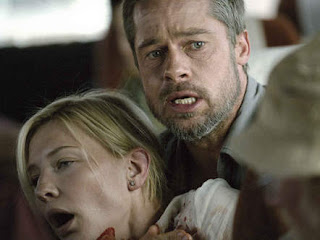Exit Poll
This is the last day of this exceptionaly long blogathon. Not quite an entire month, but 3 good weeks. I'm happily surprised by the success of the event and overwhelmed by the enthousiastic response! Thank you very much to all contributors, readers and bloggers who relayed the information with a friendly link . Also special thanks to the Cahiers forum readers who discussed the subject in French over there . I apologize to the contributors I haven't had the time to comment on their post yet, I will soon I promise. I tried to keep up with the flow until it was faster than me. But the Unspoken Cinema blog is still alive here and I hope this fascinating collegial discussion will keep going past the blogathon . I know the topic was a little confusing but it didn't prevent fruitful conversations to happen. The question of an alleged "Contemplative Cinema", which has raised a lot of controversy, hasn't been sorted or completely ruled out yet. Everyone is welcome to r...


